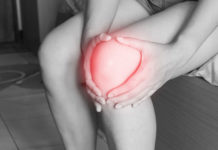Varicose veins can appear at any point in your life, with many people being unaware that these type of veins can affect anyone. They do appear most often in older people, pregnant women, and people who are very active or very sedentary, but as many as 84% of people will develop thread veins at some point in their lives. 20% of those will turn into varicose veins that require treatment. Preventing and treating varicose and thread veins is possible, and modern treatments are becoming increasingly non-invasive, with many options to choose from.
What Causes Varicose Veins?
The network of veins running through your body function in a very particular way, with small valves inside them helping the blood to move from the extremities back to the heart. When these tiny valves fail or stop working correctly, blood can begin to pool inside the vein, and slowly seep into the tissue surrounding it. What this looks like is that the vein begins to bulge and swell, showing through the skin. Often the vein will have a blue or greenish colour. This can become painful, and can have flow-on effects like eczema in the surrounding skin, bruising, and discomfort. While varicose veins are common, they do need to be treated promptly. This is because a further risk is that the pooling blood can turn into a blood clot, which can then cause much more serious issues.
These kind of veins appear most often in particular groups of people. For instance, very active people who are standing a lot may develop varicose veins, due to being on their feet for large portions of the day. Alternatively, people who spend a large portion of each day sitting may also develop varicose veins because the blood in their legs is not circulating as much and can be more likely to clot and pool. In addition, pregnant women are also more susceptible to developing varicose veins. This is for two main reasons: first, the blood volume in a pregnant woman’s body doubles to support the placenta and growing baby; and second, the weight of the baby, placenta, and uterus also puts additional pressure down into the pelvis as it all grows. This causes the valves in the veins to work overtime, making them more likely to fail.
How Does Varicose Vein Surgery and Treatment Work?
Before needing to consider surgery and treatment, think about what you can do to prevent varicose veins from forming in the first place. If you are very sedentary, make sure that you take breaks throughout the day to get up and walk, or do some other light exercise. This can help your circulation to stay healthy and prevent blood clots. Alternatively, if you spend a lot of your day standing, make sure you take breaks to elevate your feet and take some pressure off the valves in your veins. Eating healthy food, drinking plenty of water, stopping smoking, and maintaining a healthy weight are also contributing factors in preventing varicose veins.
If varicose veins have already formed, there are several treatment approaches that you can consider. Many of the modern treatments are minimally-invasive surgeries, and most have short recovery times. There are two different kinds of surgical treatment available, chemical-based treatments and heat-based treatments. Both kinds of surgery seal off the leaking vein, to stop blood seeping into the tissues and to help the veins return to normal function.
Regardless of whether you choose a heat-based or chemical-based treatment, both types do require an incision to be made to enter the vein. This means that after the surgery, for a few days you will need to wear a bandage and take painkillers. As part of your varicose surgery recovery, you may also be told to wear compression stockings, and you can use natural remedies like Arnica to help with swelling. Within a few days you will be able to return to work and drive your car, as well as engaging in light exercise. Heavy exercise should be delayed for a week or two, and you should refrain from taking long-haul flights for at least a month after the surgery.
Managing thread veins and varicose veins may sound daunting, but the process is in many ways quite simple. Ensure that you take preventative measures if you fall into one of the at-risk groups, and if you have a vein that needs to be treated you can have confidence that the treatment and recovery are straightforward.






